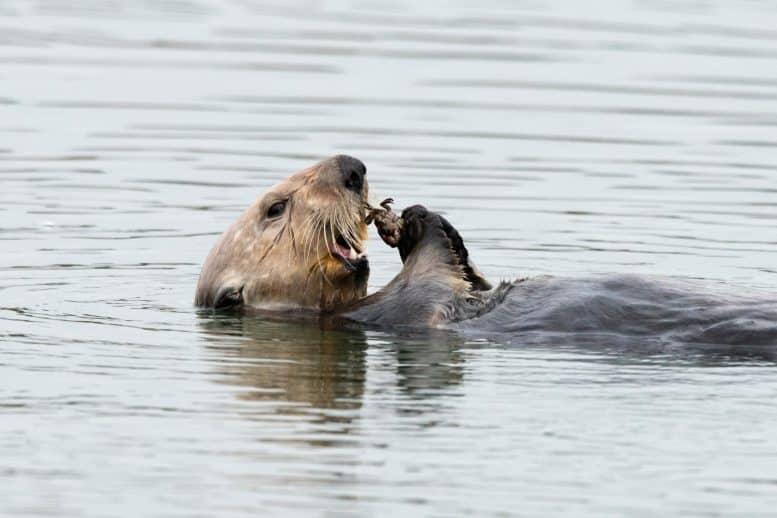
1. Sea Otters Are Saving California’s Coasts
California, USA: The reintroduction of sea otters in Central California significantly slows erosion, offering a promising, low-cost approach to coastal ecosystem conservation. Researchers have documented a dramatic decrease in creekbank and marsh edge erosion, up to 90%, in the Elkhorn Slough of Monterey County, attributable to the restored sea otter population.
The restoration of sea otters in a California estuary has not only curbed erosion effectively but also demonstrated the vital role of top predators in ecosystem stability. “It would cost tens of millions of dollars for humans to rebuild these creekbanks and restore these marshes. The sea otters are stabilizing them for free in exchange for an all-you-can-eat crab feast,” said senior author Brian Silliman, Ph.D., Rachel Carson Distinguished Professor of Marine Conservation Biology at Duke University’s Nicholas School of the Environment.
Thank you for your generous gift that will help us continue the production of this weekly, free publication
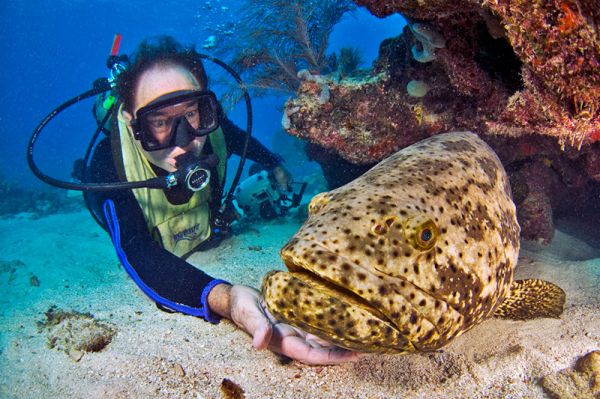
2. In Memorium: Paul Humann, Photographer and Author of Divers’ Marina Identification Bibles
Underwater photographer, boat captain, author, editor, and publisher, Paul Humann, has died at the age of 86. The diving industry pioneer co-founded New World Publications, publisher of fish and critter identification books that became the industry standard, as well as Reef Environmental Education Foundation (REEF), an organization whose hands-on marine conservation and citizen science programs have helped to safeguard biodiversity and ocean life around the world.
His study and documentation of the Caribbean’s coral reefs while taking guests diving from his liveaboard, M/V Cayman Diver, laid the groundwork for the revolutionary marine life field guides that he subsequently co-authored with Ned DeLoach. Paul was a 2006 recipient of DEMA’s Reaching Out Award and the following year was inducted into the International Scuba Diving Hall of Fame. In 2010, he was the recipient of a NOGI award for his efforts to preserve the underwater world.
Editorial Note: Paul Humann was a close personal friend to Sea Save Foundation and to our founders. Our office shelves bear witness to this connection, adorned with well-thumbed editions of his invaluable books. Under his expert guidance, we’ve captioned hundreds of thousands of still images and video clips, each one a testament to his meticulous attention to detail, his visionary approach, and his profound love for the ocean’s wonders. Paul, your legacy will forever ripple through the waters you so cherished. We will miss you.
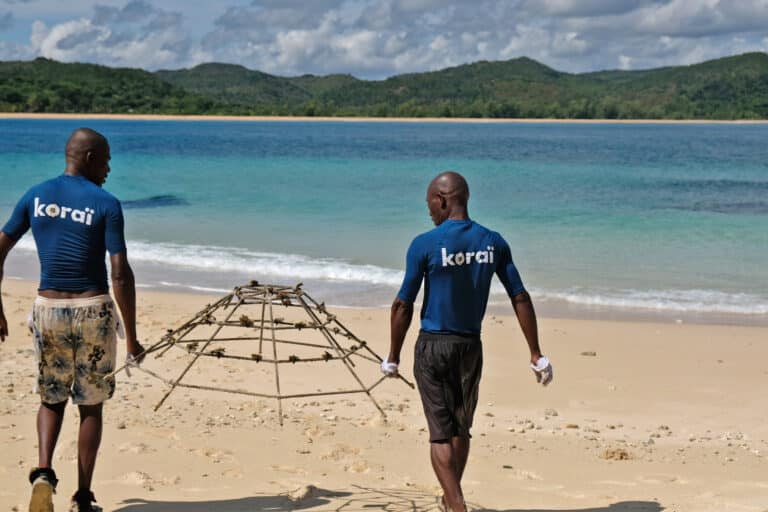
3. From Exporting Coral to Restoring Reefs, a Madagascar Startup Rethinks Business
Madagascar: With coral cover declining in Madagascar, Koraï, a Franco-Malagasy startup, has shifted its focus to coral reef restoration from its predecessor’s specialization in coral export. Its founder Jeimila Donty is part of a young “pro-climate” generation keen to grow their businesses while working to protect the environment. After her father passed away, she decided to take over the business and shift its focus to restoring coral reefs.
Surrounded by some 2,400 square kilometers (927 square miles) of reefs that are home to 380 species of coral, Madagascar boasts exceptional marine biodiversity. However, according to a 2022 study, the island has undergone an “overall degradation of coral reefs” mainly due to bleaching events, overfishing, and sedimentation. Koraï’s model is ambitious, and faces many challenges, particularly in recruiting employees, a lack of infrastructure in the island, and a lack of interest in marine conservation.
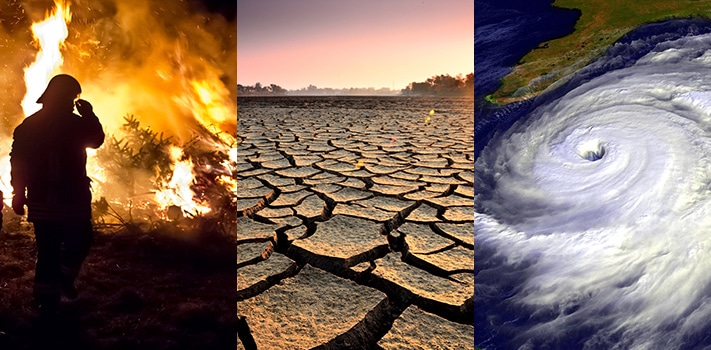
4. Supreme Court Greenlights Climate Lawsuit Against New Zealand Corporations
New Zealand: The Supreme Court as given the nod for individuals and NGOs to proceed with lawsuits against seven New Zealand corporations for their contributions to climate change. Initially filed in 2019 under tort law, Smith’s case targets major contributors to NZ’s greenhouse gas emissions, seeking accountability for their impact on climate change through public nuisance, negligence, and breach of duty of care claims.
The lawsuit emphasizes the significant environmental harm caused by these emissions, advocating for the companies to commit to substantial emission reductions by 2025 and achieve net zero by 2050. This landmark decision marks a pivotal moment in climate litigation, challenging corporate responsibility in the face of global environmental crisis.

5. Global Environment Facility Approves 916 Million Dollars for Urgent Action
The Global Environment Facility’s (GEF) 186 member governments on Monday allocated 916 million dollars (US) for international action on biodiversity, climate change, nature renewal, and pollution control, and advanced five Integrated Programs designed to tackle complex challenges in their entirety. The GEF Council, meeting in Washington DC, approved funding for 45 projects and programs, including four blended finance initiatives involving the private sector.
The support will directly help more than 12 million people, including Indigenous Peoples and local communities. The work program – the second-largest in the GEF’s history – includes 530 million dollars (US) for Integrated Programs for the ocean, food systems, transportation infrastructure, wildlife conservation, and critical forest biomes that have been designed to break down silos and advance holistic action across sectors and borders.
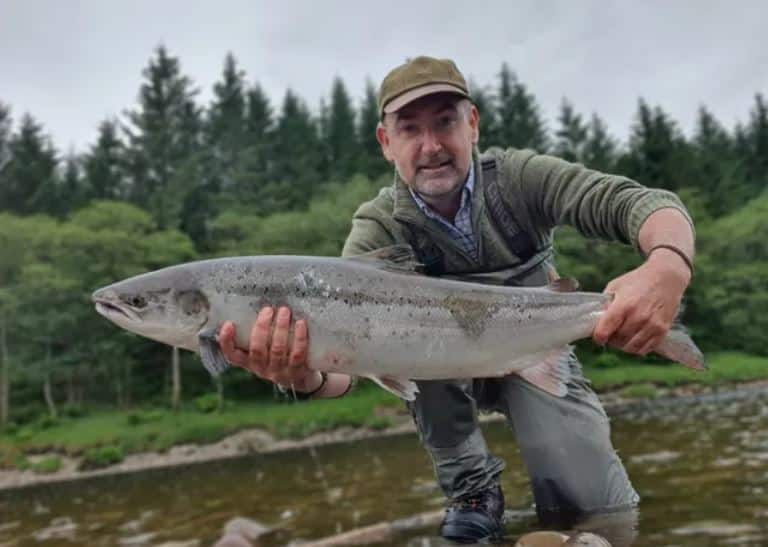
6. Salmon Scotland Wild Fisheries Fund Boosts Wild Atlantic Salmon Conservation Initiatives
Scotland: The Salmon Scotland Wild Fisheries Fund will invest £140,000 (U.S. 175,000 dollars) into supporting the conservation of Scotland’s wild salmon. The funding will be used to restore habitats, provide protection from predators, and promote efforts to replenish salmon stocks in the country’s rivers. Wild salmon and sea trout populations throughout the UK have been in decline for decades – particularly because of habitat loss and rising river and sea temperatures.
These fish now have a marine survival rate of just 1 to 5 percent, compared to around 25 percent only three decades ago. The Scottish Government has identified other pressures facing wild salmon, including non-native plants, predation by fish, birds, and seals, and obstacles to fish passage including dams and weirs.
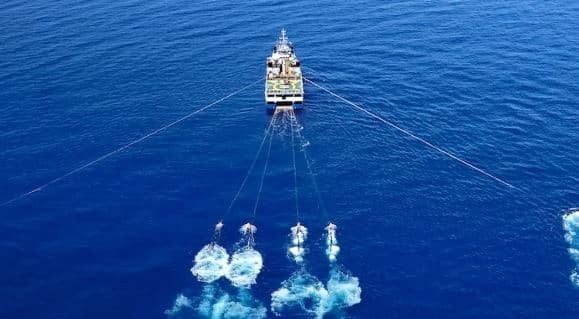
7. Coast Watchers Blast Seismic Test Process
Australia: Opponents of the expanding fossil fuel sector in the southern ocean say operators are using ‘cowboy licenses’ to search for gas and should be stopped. Special Prospecting Authority (SPA) are permits that allow mass seismic blasting off the coast. They are cheap to purchase and not subject to the rigours applied to traditional exploration procedures.
Critics like the Australian Marine Conservation Society (AMCS) refer to them as ‘cowboy permits’ – 8250 dollars (US) allows a company up to 180 days of seismic blasting, including access to species-sensitive areas. One of the only ways the public can weigh in is by wading through thousands of pages of complex reports within a 30-day window after the application has been submitted by the companies doing the blasting. The AMCS is setting up a submissions page on its website to help streamline the “labyrinthine” process to counter this challenge.
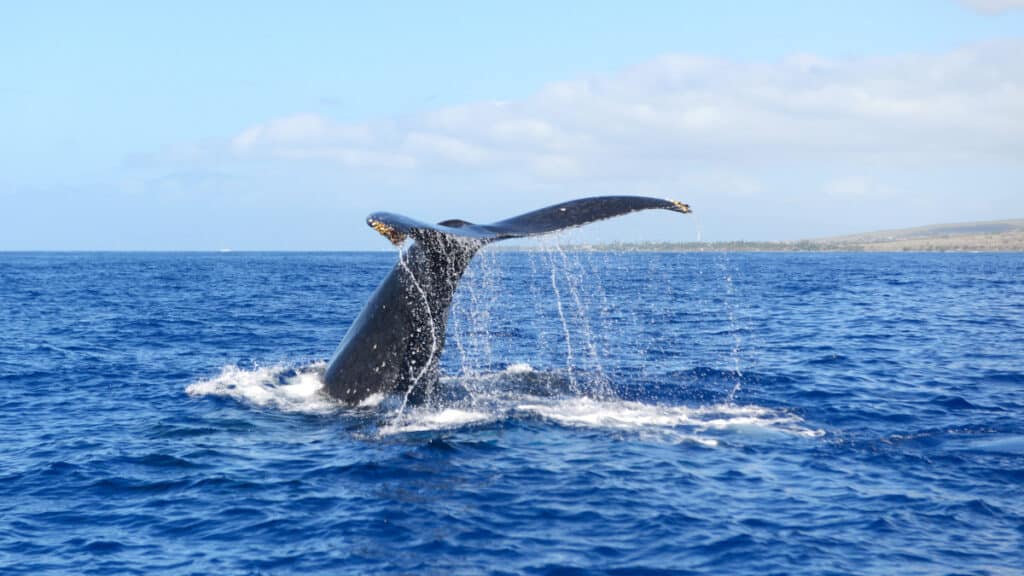
8. Operation Koholā Guardians Underway During Humpback Whale Season In Hawaiʻi
Hawai’i, USA: A collaborative effort to reduce the risk to humpback whales during breeding season is underway and includes the U.S. Coast Guard District 14, the National Oceanic Atmospheric Administration Office of Law Enforcement, and the Hawaiʻi DLNR Division of Conservation and Resource Enforcement.
“Prohibited and unlawful” practices include: getting within 100 yards of a whale, whether it’s a vessel, individual, or drone’ approaching a humpback whale; operating an aircraft within 1,000 feet of any humpback whale, except as necessary for takeoff or landing from an airport or runway; harassing, hunting, capturing, or killing, or any attempt to do any of these actions, of any humpback whale in the sanctuary.
Hawaiian Islands Humpback Whale National Marine Sanctuary (HIHWNMS) is one of 15 National Marine Sanctuaries designated as areas set aside for long-term protection and conservation and provides important habitat for humpback whales.
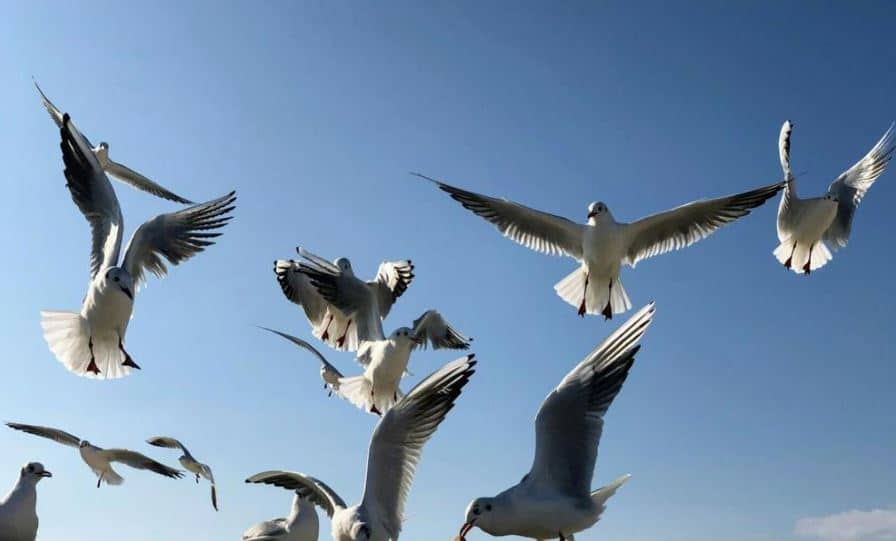
9. Gulls Contribute to Plastic Pollution in European Wetlands Study
England: British gulls are contributing to plastic pollution in Europe’s key wetland areas, a new study has revealed. Scientists estimate that one lake in Spain where flamingos live has 400kg of plastic a year dumped there every winter by gulls. Gulls, like birds of prey and owls, regurgitate things they are unable to digest – typically fish bones and feathers. Birds who feed on landfills will regurgitate plastic, glass, textiles, and more – meaning these harmful substances are deposited at natural wetland sites.
“We know that eating these pollutants can cause serious direct harm to birds’ health, but this research shows that the problems could have far greater ecological impact than previously expected,” senior author Professor Andy Green said. Once in the lake, the plastics have nowhere to go – meaning they eventually break down into microplastics, causing possible long-term threats to other wildlife and the environment.
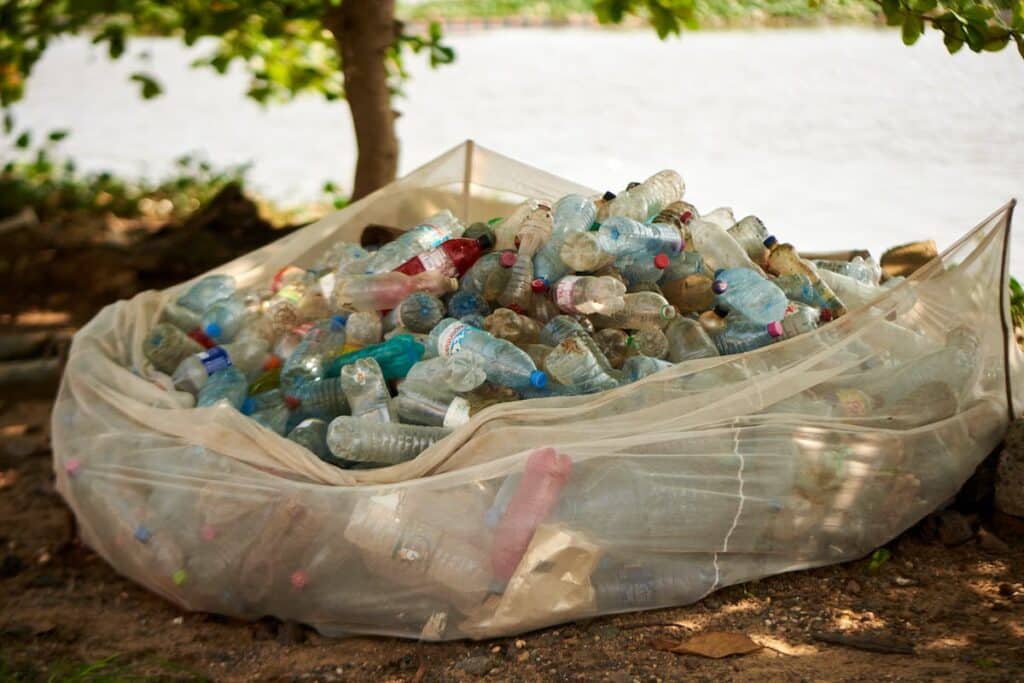
10. Plastic Credits to Be Leveraged by Groundbreaking Outcome Bond
An innovative plastic waste reduction-linked bond announced by the World Bank, Citibank, and Plastic Collective will leverage Waste Collection Credits and Waste Recycling Credits (“Plastic Credits”) to provide investor returns. Plastic Credits are expected to be generated by two projects seeking registration in Verra’s Plastic Waste Reduction Program. Verra is a nonprofit, operating leading standards programs in the environmental and social markets.
The use of Plastic Credits demonstrates a novel pathway for financial instruments to support the scaling up of plastic waste reduction activities. The World Bank states, “Investors are providing approximately 14 million dollars (US) in up-front financing required by the projects to increase capacity at existing facilities, expand to new collection and recycling sites, and install food-grade recycling equipment.” The investors will receive coupon payments linked to the sale of Plastic Credits the projects hope to generate on top of a fixed amount.
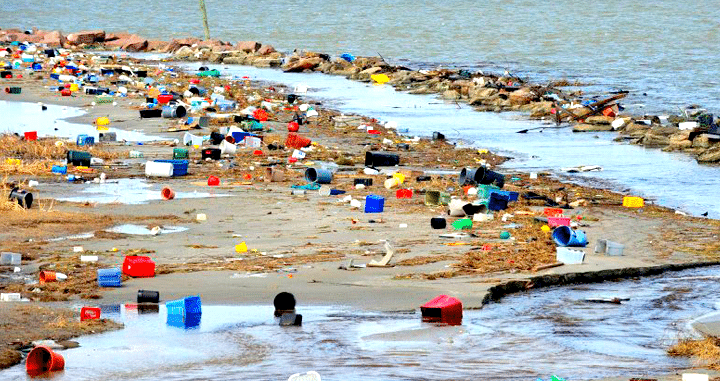
11. Innovating Recycling: Inside the 150 Million Dollar Materials Recovery Facility
Lane County, Oregon: Mixed waste, commingled recyclables, and organics will soon be processed by local plant Bulk Handling Systems (BHS), with a projected boost to the county’s diversion rate of up to 20 percent. Set to open in late 2025, the plant will be one of the most technologically advanced waste processing facilities in the U.S. Organics will be processed onsite with an anaerobic digester, and comingled recyclables will no longer have to be sent out for processing.
BHS patented an automated process for mixed waste recovery in 2007 and was selected largely for the company’s streamlined ability to process organic waste, which is an enormous part of trash sorting. BHS’s processing line will bring in at least 160,000 tons per year of municipal solid waste, curbside garbage that was previously going directly to the landfill.
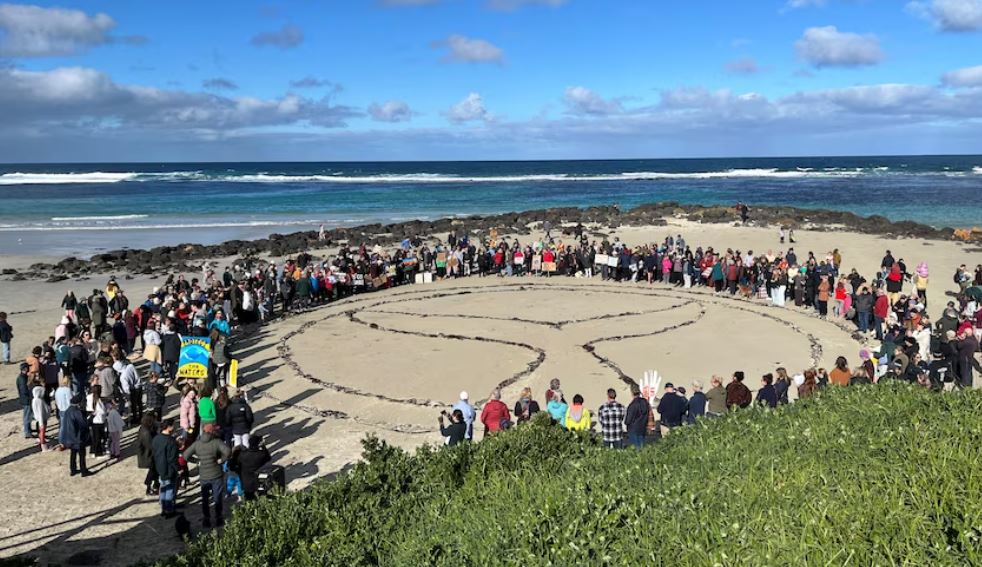
12. Otway Basin Seismic Petroleum Survey in Whale Nursery Moves to Next Stage Despite Community Pushback
Australia: An Otway Basin seismic survey test is proposed by geoscience technology services company CGG, despite protests throughout January and pushback from councils. Protesters are concerned plans for seismic testing near a whale nursery during the calving season are moving forward quickly despite widespread community opposition. Seismic testing is a method of oil and gas exploration that involves penetrating the seabed with loud sounds via an air gun.
Soundwaves are then analysed to form a picture of what lies beneath. The application for the survey was formally made by the CGG to the offshore regulator just days before the end of the month-long Great Ocean Rescue, a campaign involving rallies and protests in towns along the Great Ocean Road, organised by activist group Otway Coastal Environmental Action Network. The application is now open for public comment, with the company to consider feedback and resubmit for assessment.
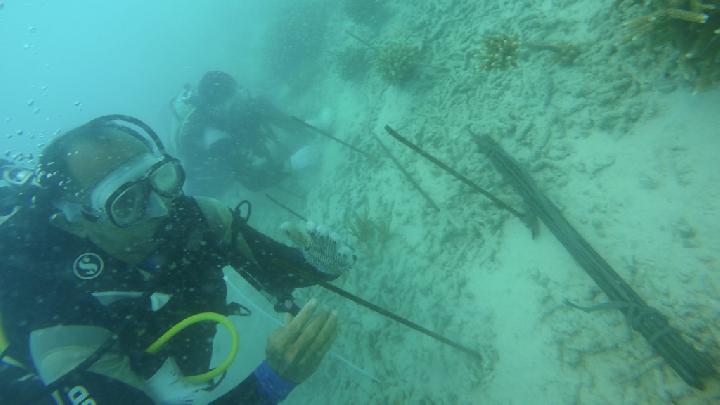
13. Indonesia Will Expand Its Marine Protected Area Nearly by the Size of Germany by 2030
The country currently has 284,000 square kilometers of marine area under protection and plans to increase this to 325,000 km2 by the end of this decade. An oceans conservation activist has welcomed the plan but says the government needs to be able to square it with a recently announced fisheries management policy that critics say threatens the sustainability of fish stocks.
Only about 25% of Indonesia’s current network of marine protected areas has proved effective at conserving fish stocks and biodiversity, and at ensuring equitable benefits for ocean-dependent communities. Indonesia’s marine biodiversity plays an important role in the domestic and global supply of seafood. The country is home to some of the most diverse marine life on the planet, especially in its eastern region which falls within the Pacific Coral Triangle, an area renowned for its richness of corals and reef fish.
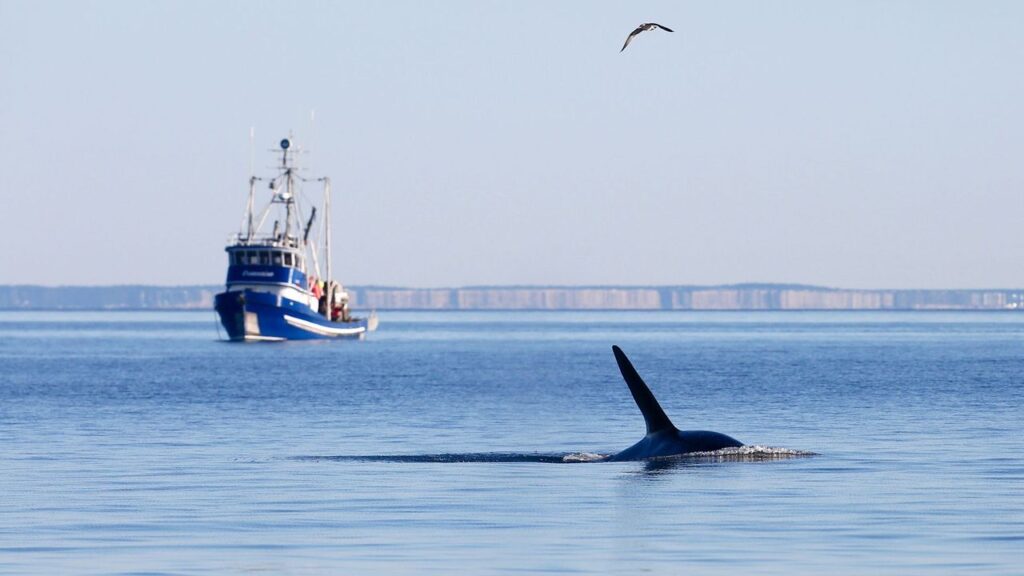
14. Canada to Produce a Long-Awaited Blueprint to Drive Down Underwater Noise Pollution
Canada: Underwater noise from human activity continues to surge in Canada’s oceans, creating an acoustic smog with harmful and even lethal impacts for a wide range of species, from microscopic plankton to great whales. Canada can turn the tide and deliver its long-promised underwater noise strategy with fast and effective regulations that will cut the clamor of human activity polluting oceans and harming marine life.
Slowing ships down to 10 knots or lower has a triple benefit. It not only dramatically reduces noise but also reduces emissions and the risk of whales being hit. A speed reduction of 10 percent across the globe’s shipping fleet could reduce greenhouse gas emissions by an estimated 13 percent, drop underwater noise pollution by 40 percent, and lessen the risk of vessels striking whales by nearly half.

15. Small but Mighty — Study Highlights the Abundance and Importance of the Ocean’s Tiniest Inhabitants
England: New research sheds light on tiny plankton, which measure less than 0.02mm in diameter but can make up more than 70% of the plankton found in the ocean.
Scientists say challenges in identifying them have led to them becoming a silent majority that is currently being overlooked when it comes to global ocean policy. The study is one of the first to explore the abundance and importance of these tiny ocean inhabitants around the UK coastline, and it has shown they can be impacted directly by changes in ocean temperatures and nutrients, in addition to other environmental shifts taking place as a result of climate change.
They should be used to inform on biodiversity indicators that meet policy obligations under EU conventions. The researchers have called for long-term monitoring of tiny plankton to ensure that policy decisions are based on accurate evidence.
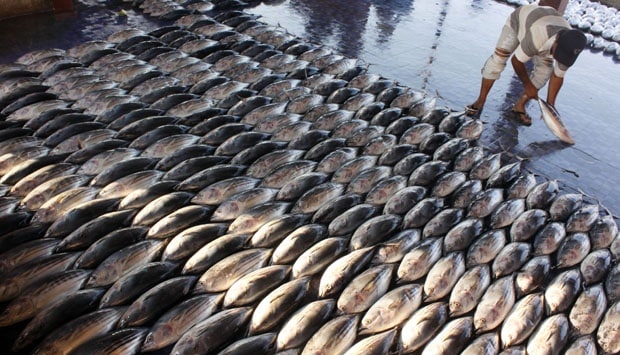
16. Indonesia Invites Investment in Tuna Cultivation From Turkey
Jakarta (ANTARA) – Maritime Affairs and Fisheries Minister Sakti Wahyu Trenggono has asked Turkey to invest in Indonesia’s tuna cultivation sector. “I went to Izmir, Turkey, to see tuna farming and cultivation. Indonesia’s tuna catch has reached 334 thousand tons per year, but they cannot be cultivated yet, so we have invited Turkey to invest in Indonesia,” he said. Indonesia has a colorful variety of tuna species, including bluefin, yellowfin, and bigeye tuna.
The government is learning to develop fisheries and marine cultivation to catch up with countries in Europe, the United States, Canada, and Australia. If Turkey invests, the value of the fish market could reach 730 million U.S. by 2030. Trenggono expressed that in the next five years, Indonesia has a strong potential to grow stronger in fisheries cultivation and other commodities, like shrimp, seaweed, tilapia, lobster, and crab.
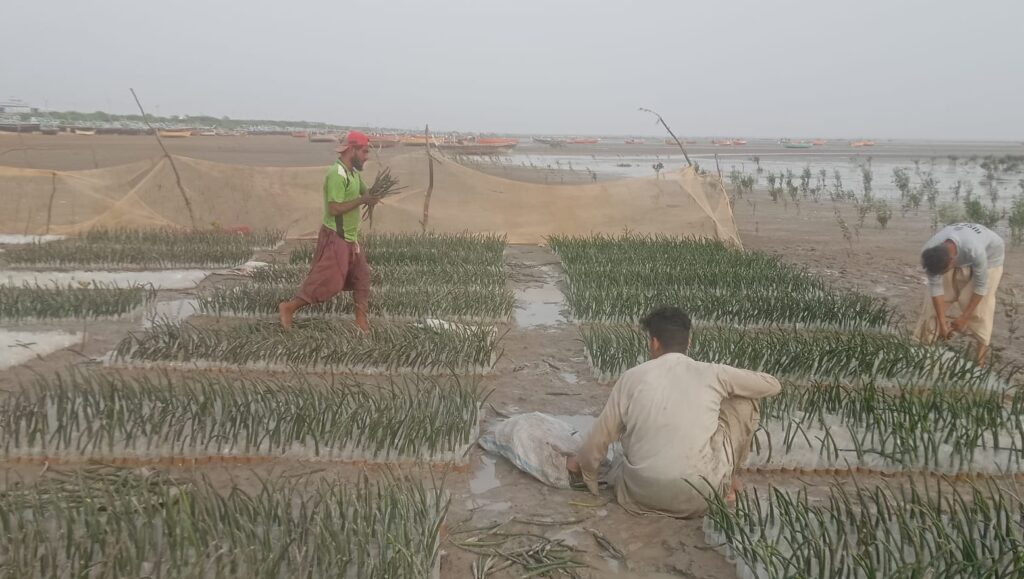
17. Pakistan Bucks Global Trend With 30-Year Mangrove Expansion
Karachi, Pakistan: Around the world, mangrove forests have undergone a decades-long decline that is just now slowing to a halt. In Pakistan, by contrast, mangroves expanded nearly threefold between 1986 and 2020, according to a 2022 analysis of satellite data. Experts attribute this success to massive mangrove planting and conservation, as well as concerted community engagement.
Many in Pakistan are looking to mangroves to bolster precious fish stocks and defend against the mounting effects of climate change — even as threats to mangroves, such as wood harvesting and camel grazing, continue with no end in sight.




